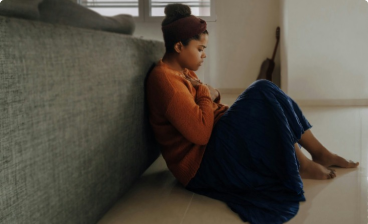Description
Following a cold, if your child pulls on their ears or complains of ear pain or discomfort, they may have a middle ear infection (otitis media).
Middle ear infections: what are they?
According to Dr Zhong, middle ear infections are frequently mentioned while discussing ear infections in youngsters. When bacteria or viruses enter the middle ear, which is the area behind the eardrum, ear infections result.
The middle ear fills with pus when Upper respiratory infections frequently precede middle ear infections. Children may experience a runny nose, congestion, or a cough, all of which are common cold symptoms. After the cold, vulnerable kids may get middle ear infections.
What are the tell-tale signs and symptoms of a paediatric ear infection?
The most typical ear infection symptom is ear pain, but some children may also have a fever or have issues with their appetite, sleep, or drinking. Pressure changes in the middle ear can be uncomfortable and result from chewing, sucking, and lying down.
Upper respiratory infections frequently precede middle ear infections. Children may experience a runny nose, congestion, or a cough, all of which are common cold symptoms. After the cold, vulnerable kids may get middle ear infections.
The most typical ear Infection symptom is ear pain, but some children may also have a fever or have issues with their appetite, sleep, or drinking. Pressure changes in the middle ear can be uncomfortable and result from chewing, sucking, and lying down.
Older kids might be able to express that their ears hurt by pulling on them or saying it out loud. Infants with ear infections, however, won’t be able to communicate that their ears are hurting.
Children may have discharge pouring from their ears in more serious infections.
Why do children suffer ear infections more frequently than adults do?
The majority of ear infections begin with cold or flu symptoms, which cause fluid to accumulate in the middle ear space. Then, dangerous bacteria may occasionally overgrow in that fluid. Middle ear infections are more common in children, especially young children between the ages of 2 and 4 years, for a variety of reasons.
First, children’s Eustachian tubes do not work as well as adults’ Eustachian tubes, the drainage tract that joins the middle ear with the nose. Their shorter, more horizontal Eustachian tubes make it simpler for bacteria and viruses to enter the middle ear.
What is the standard ear infection treatment?
Research has revealed that healthy children’s ear infections occasionally go away on their own, even without medication. Parents may be allowed to watch their children for two to three days, especially if they are older kids. You might not need to take them to the paediatrician if their symptoms get better. Of course, you should always consult your child’s paediatrician if you have any questions.
According to Dr Zhong, antibiotic treatment is advised for all acute ear infections and middle ear infections in children under the age of six months. Or antibiotics are advised if the infection doesn’t go better after 48 to 72 hours.
Concern should be expressed if symptoms persist for more than two to three days after the ear infection first appears. Acute mastoiditis is a more serious infection, and it may also be indicated by a prolonged fever or changes in your child’s mental state, such as increased sluggishness or a lack of usual activity or concentration.
The Inflammation of the bone behind the ear is known as acute mastitis. The ear may slightly protrude in some circumstances, or you may see oedema and redness behind the ear.
You should take your child to a paediatrician or an urgent care facility as soon as you notice any serious infection-related symptoms.
How can I help my child’s ear feel better during an infection?
With or without antibiotic treatment, you can help relieve symptoms by giving your child acetaminophen or ibuprofen for pain and fever as needed. Your doctor may also recommend using pain-relieving ear drops as long as the eardrum hasn’t ruptured.
How Long Should Ear Infections Last?
Ear infections with observation and no treatment should last about two to three days. As for treatment, you should expect your child to improve within a day or two of taking antibiotics. But the whole course of infection can last a week or two, similar to a cold.
Can an ear infection negatively affect hearing?
An ear infection usually starts with fluid in the middle ear, which can affect the vibration of the eardrum and lead to conductive hearing loss. Conductive hearing loss occurs when something — like fluid in the middle ear — blocks sound from travelling to the inner ear. Children with this problem might:
- Do not react to quiet noises.
- You need to turn up the TV or radio.
- Speak louder.
- Appear inattentive at school.
- In most cases, this type of hearing loss is usually temporary. When the infection goes away and this fluid goes away, the hearing should return to normal.
You might also like
Parenting Updates: Subscribe Now!

ALL UPDATES
Go from pregnancy to adolescents with our email bulletins, loaded with reasonable, modern data about bringing up youngsters and taking care of yourself as a parent.
SUBSCRIBE NOW
MOVIE REVIEWS
Find the best motion pictures for your family with our youngster amicable surveys. Search new deliveries and more seasoned motion pictures by age, rating and type.
SUBSCRIBE NOW
MENTAL HEALTH RESOURCES
Is it safe to say that you are an expert working with families? Get data about kid, adolescent and parent psychological well-being and prosperity.
SUBSCRIBE NOW











































